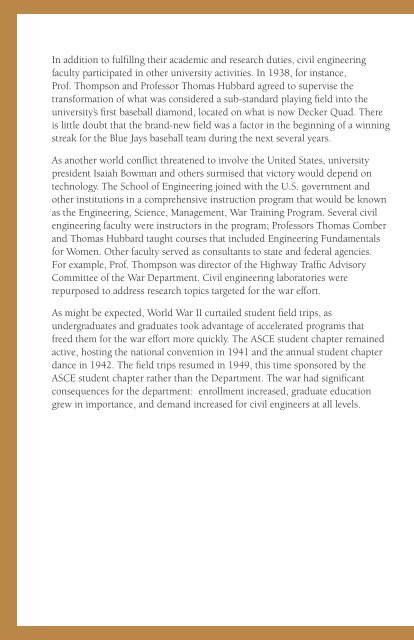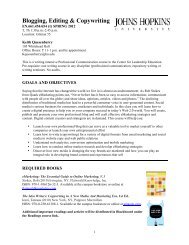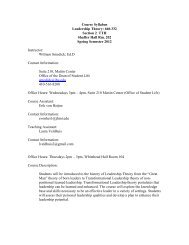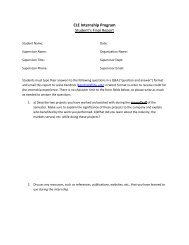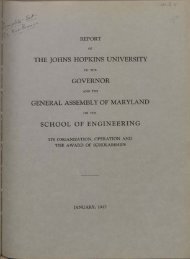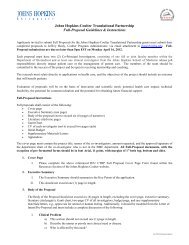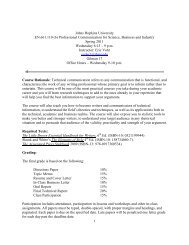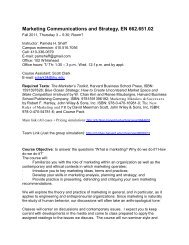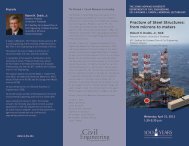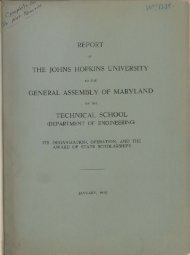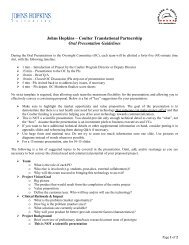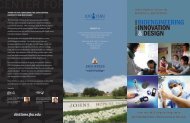Read More - Johns Hopkins University
Read More - Johns Hopkins University
Read More - Johns Hopkins University
Create successful ePaper yourself
Turn your PDF publications into a flip-book with our unique Google optimized e-Paper software.
In addition to fulfillng their academic and research duties, civil engineering<br />
faculty participated in other university activities. In 1938, for instance,<br />
Prof. Thompson and Professor Thomas Hubbard agreed to supervise the<br />
transformation of what was considered a sub-standard playing field into the<br />
university’s first baseball diamond, located on what is now Decker Quad. There<br />
is little doubt that the brand-new field was a factor in the beginning of a winning<br />
streak for the Blue Jays baseball team during the next several years.<br />
As another world conflict threatened to involve the United States, university<br />
president Isaiah Bowman and others surmised that victory would depend on<br />
technology. The School of Engineering joined with the U.S. government and<br />
other institutions in a comprehensive instruction program that would be known<br />
as the Engineering, Science, Management, War Training Program. Several civil<br />
engineering faculty were instructors in the program; Professors Thomas Comber<br />
and Thomas Hubbard taught courses that included Engineering Fundamentals<br />
for Women. Other faculty served as consultants to state and federal agencies.<br />
For example, Prof. Thompson was director of the Highway Traffic Advisory<br />
Committee of the War Department. Civil engineering laboratories were<br />
repurposed to address research topics targeted for the war effort.<br />
As might be expected, World War II curtailed student field trips, as<br />
undergraduates and graduates took advantage of accelerated programs that<br />
freed them for the war effort more quickly. The ASCE student chapter remained<br />
active, hosting the national convention in 1941 and the annual student chapter<br />
dance in 1942. The field trips resumed in 1949, this time sponsored by the<br />
ASCE student chapter rather than the Department. The war had significant<br />
consequences for the department: enrollment increased, graduate education<br />
grew in importance, and demand increased for civil engineers at all levels.


